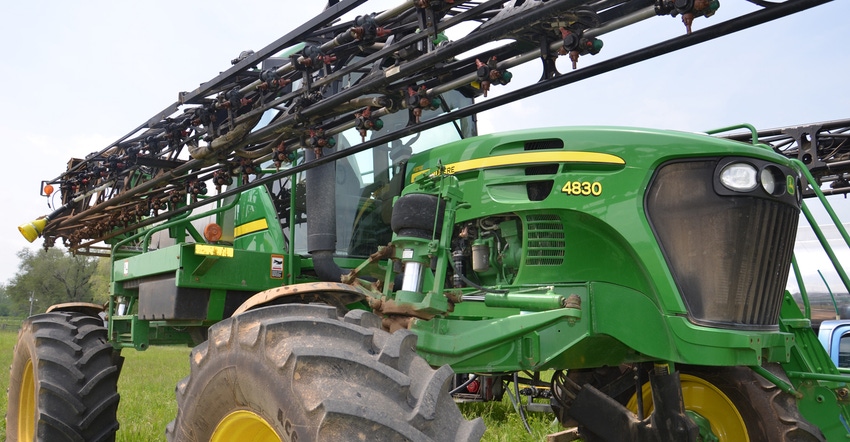
How many places can herbicide residue hide within a sprayer? There are numerous spots. Fred Whitford points to six primary areas where residues can hide and offers tips on how to win this risky game of hide-and-seek.
Whitford, director of Purdue University Pesticide Programs, spent two years cleaning out sprayers, guided by expert applicators. He produced PPP-108, "Removing Herbicide Residues From Agricultural Equipment." Filled with pictures illustrating his points, it could be used as a map for rooting out residues well hidden inside the sprayer.
Here are the six key spots where residues hide:
1. Spray tank. Herbicide residue can cling to the inside surface of the spray tank, and can sometimes embed itself in the tank lining, Whitford says. Cleaning the inside surface is critical.
Flat-bottomed tanks have corners where herbicides hide. Some tanks are plumbed so they don’t drain completely. If the tank’s drainage opening is above the bottom of the sump, residue can collect there.
2. Hoses. Rubber hose is more prone to hold embedded residue than plastic hose. Plastic is less porous than rubber, too, Whitford notes. If rubber hoses begin cracking, residue can adhere to the cracks. “The other problem with hoses is that they don’t always run straight and may sag in some sections,” Whitford says. “You can use tarp straps or zip ties to hold up sections of hose so it becomes self-draining.”
3. 'Blind' alleyways. By opening and closing valves, you can cause clean water and tank cleaner to flow through all hoses, Whitford says. This removes trapped products and residue. You may need to do this manually, depending upon your system.
4. Spray booms. The pump loses prime once the tank is empty, Whitford says. That’s why product winds up left in the booms. There isn’t enough pressure to force it out. The only way to get it out is to refill the tank with water and reprime the pump. Spray it out in a field, not a barn lot. Clean water pushes out any remaining herbicide. However, any mixture that returns to the tank through a bypass could be contaminated with residue.
5. Screens. Screens are supposed to remove any objects too big to go through the nozzle orifice. However, they can also become sources of hidden residue. On a nozzle turret with multiple nozzles, there is usually a screen within each nozzle. Because nozzle turrets can often hold residues, rotate the turrets during the flushing process, Whitford says.
6. End caps. End caps, also called clean-out caps, are usually located on the end of each section of boom. The last nozzle is usually 3 to 4 inches in from the cap. Herbicide settles out and collects there, Whiford notes. Unless you regularly remove and clean out the pasty material that builds up in the end of the boom, a significant amount of residue can hide there and cause contamination issues.
About the Author(s)
You May Also Like




